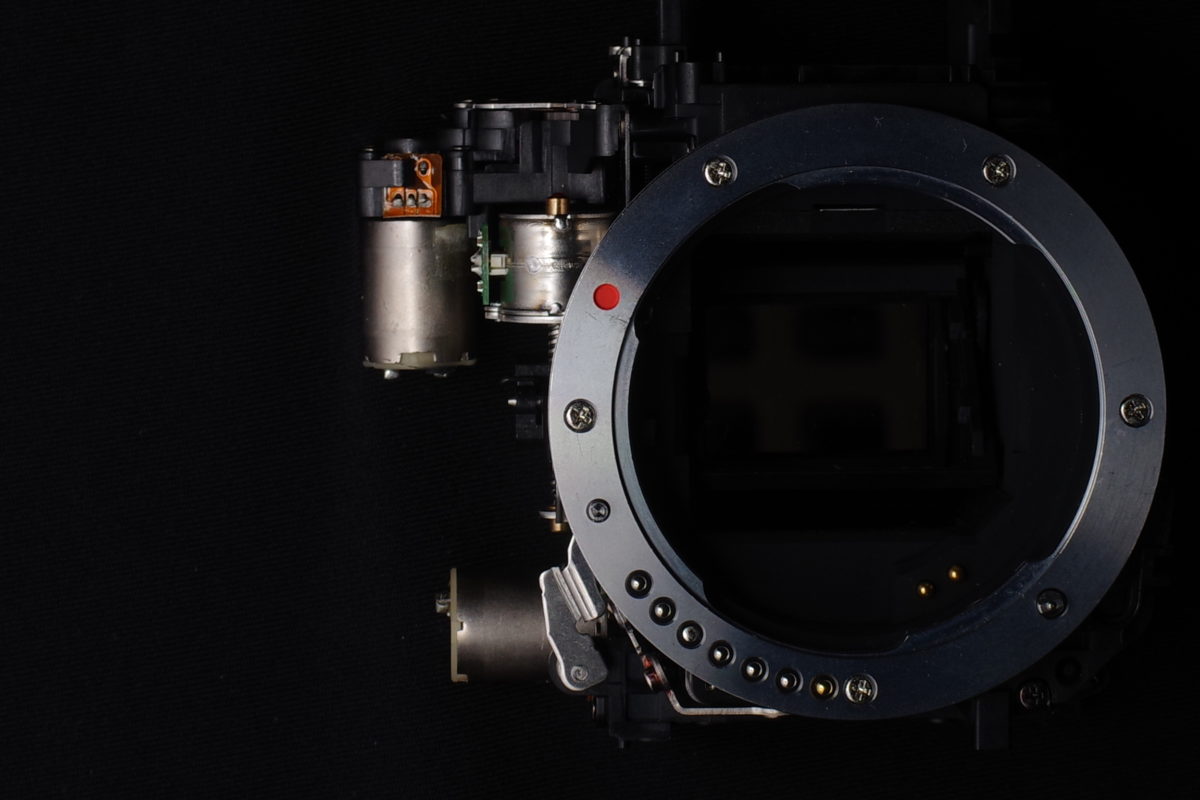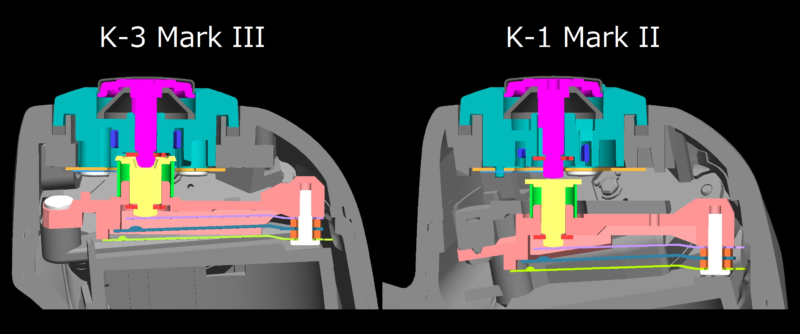Hi everyone! I’m Shigeru Wakashiro, in charge of planning and development for PENTAX digital SLR cameras.
I’d like to talk about the shutter-release action of the new PENTAX K-3 Mark III.
Of all the photographic processes, the action needed to release the shutter takes only a fraction of a second. At the moment of shutter release, your finger directly feels the action of the shutter-release button and the movement of the mirror and shutter mechanisms. This instant is a very important factor in achieving a sense of pleasure from your photography.
The PENTAX K-3 Mark III was developed to be an active field camera enclosed by a compact, sturdy body, and it provides just such a smooth, pleasant shutter-release action.

In previous APS-C-format SLR models, such as the PENTAX K-3 II, we used a tactile switch in the shutter-release mechanism to help reduce the size of the camera body. For the PENTAX K-3 Mark III, however, we decided to use a leaf switch incorporating three leaf springs instead. This type of switch was previously used in the PENTAX 645Z and PENTAX K-1. We did this because we wanted to develop a shutter mechanism that provided a lighter, smoother shutter action, but one that also reduced the worry of unexpected, accidental shutter releases. We also wanted the shutter-release action to provide an adequate amount of pressure and depth, but without the need to apply excessive force. We felt that this kind of mechanism would stabilize the camera at the moment of shutter release, and also provide effortless holding down of the shutter-release button during continuous shooting.
Designing a compact camera body with a leaf switch mechanism required a thorough review of the camera’s internal structure, because this mechanism required a configuration in which one part connected to the shutter-release button pushed another nail-shaped part to release the shutter. For the PENTAX K-3 Mark III, we decided to create a dent at the top of the nail-shaped part to reduce height. By optimizing the shape of each part and adopting a number of small improvements such as this, we were able to develop a compact, dependable shutter mechanism, one that provides a smooth, pleasant shutter-release action equal in operational comfort to the PENTAX K-1, while also minimizing the wobble of the shutter-release button.

The PENTAX K-3 Mark III incorporates totally redesigned mirror- and shutter-driving mechanisms. We adopted a damper mechanism for the main mirror to absorb shocks, while also reducing the weight of the entire mirror mechanism to cut collision energy. This let us achieve both high-speed mirror action, and a reduction in the amount of mirror bounce. We also incorporated a new design in the drive and stop mechanism of the sub-mirror to greatly reduce the time required for the sub-mirror to move to the stop position.
We selected highly responsive coreless motors to drive the mirror and shutter mechanisms, and programmed these motors to provide more precise control of mirror and shutter actions. We also incorporated optical sensors to more precisely monitor the position of the cam gears that were driven by the motors. This means that we can assure more accurate control of the start and stop points of these mechanisms, while minimizing unwanted actions such as mirror bounce, for improved high-speed operation of these mechanisms. Because of these improvements, we reduced the time required for a single picture-taking sequence to approximately two-thirds of that of the PENTAX K-3 II.
I believe that this newly developed drive mechanism greatly contributed to improved comfort in continuous-shooting operation, by increasing the continuous-shooting speed and shortening the image disappearance time. At the same time, the PENTAX K-3 Mark III’s smooth, pleasant shutter-release action, coupled with the satisfying feel you get when firing off an SLR camera shutter, justifies our passion for creating a camera that provides pleasure in every step of the photo-shooting process.
For more information about K-3 Mark III see here

